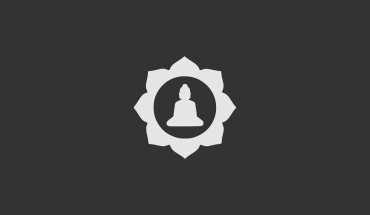 Comparing Buddhist techniques of observing (vipassana) we can distinguish three approaches:
Comparing Buddhist techniques of observing (vipassana) we can distinguish three approaches:
The first one defines itself as merely “observing what is” in a supposedly neutral fashion. Various traditions define this to be simple a “looking at what is happening” without interference. Lets disregard for a moment the level of concentration which may or may not have occurred or practiced up to that point, this particular school of thought traditionally believes that it suffices to “mindfully observe”. For them thirst is usually equivalent with craving, desire or aversion in emotions.
The second approach inherits everything aforesaid, however they would postulate, that the first mode of observation is overlooking a subtle but important point: If we agree, that our object of observation is name-and-form as well as consciousness and that they are held together by some form of deep rooted thirst for being, than that implies that every moment where we consciously experience a moment of “here am I observing” and “there is the object I observed” we are already grasping. We are already agreeing (maññati) in one form or the other that the observed is ours or belongs to us – which means putting us into a relationship with it. Thus they challenge that if we were to “just let ourselves observe” we actually are grabbing the snake not at its head but in most moments of meditational experience we grab it somewhere at its body or tail. Thus the meditation would in turn consist most of the time of continuous grasping at thoughts, feelings, perceptions, etc. and not qualify at what the Buddha indicated as “yoniso manasikara” or an “attention going to the source/origin/womb” of experience. Buddhist schools who propagate this insight then usually introduce a technique of noting to stop the mind right after any experience given. The idea is reflected in the Buddha’s explanation (see SN, Salayatanavagga etc.) that the meditator has to see whatever arises as
“impermanent”, “painful”, “empty” etc. These labels which are used as short descriptions are a form of using name itself in its most basic form of attention (see MN 9) to stop short the proliferating process of the mind which sets in after each sense impression gets registered. Here then, the meditator tries to grab the snake of unfolding sense-experience as close to the head as he can get. In the beginning this practice will very much look like the former method described, but eventually lead beyond it, much closer to the range of an experiential event-horizon where in each moment the world of name-form and consciousness is born. Such an approach creates an ultimate tool of “wisdom which sees the rising and falling” of the world (six senses) without compromise. A compromise would mean letting the mind unfold into a relationship with the object at which end a person would perceive itself observing – caught up in outright duality.
The third approach in turn inherits everything aforesaid, but it does not allow for any “excuse” to not note. In other words, while the second approach or school of meditators may still cave in and justify an intentional change in their meditation observation this third approach would argue that once we enter this sharp mode of observation that now anything must be observed equally outright. For example: While some insight meditation teachers in the second school of thought legitimize that a student may “change his meditation object if a secondary object becomes prevalent” this third method of observation would argue that there is no such thing. If we attend to anything observed trying to just see what happens at its core, than even a desire/intent to switch objects can only be noted. To take it up and willingly change the meditation object would resemble a shallower approach, would in fact mean to take up and grasp at the observed! In this line of argument nothing remains not to be noted once we start our meditation sessions, including the noting itself should it become an object of consciousness! It would actually be hard to ever stop this meditation again, but as we all know, desire and samsara will eventually end even this meditator’s meditation session when painful identification with his body becomes overwhelming and lets him take it up and self-identify again.
However, as it can be seen just from a mere theoretical perspective – these three approaches all try to help the meditator loose his deep-rooted love with seeing, hearing, smelling, tasting…thinking. Just as the Buddha encourages anyone who wants to replicate his Nirvanic experiment, as we can glean from many suttas at the core of all Buddhist schools. Here two quick samples:
SN, Salayatanavagga. Pahānasutta. [pi]
‘Sabbappahānāya vo, bhikkhave, dhammaṃ desessāmi. Taṃ suṇātha. Katamo ca, bhikkhave, sabbappahānāya dhammo? Cakkhuṃ, bhikkhave, pahātabbaṃ, rūpā pahātabbā, cakkhuviññāṇaṃ pahātabbaṃ, cakkhusamphasso pahātabbo , yampidaṃ cakkhusamphassapaccayā uppajjati vedayitaṃ sukhaṃ vā dukkhaṃ vā adukkhamasukhaṃ vā tampi pahātabbaṃ…pe… yampidaṃ sotasamphassapaccayā uppajjati vedayitaṃ sukhaṃ vā dukkhaṃ vā adukkhamasukhaṃ vā tampi pahātabbaṃ… yampidaṃ ghānasamphassapaccayā uppajjati vedayitaṃ sukhaṃ vā dukkhaṃ vā adukkhamasukhaṃ vā tampi pahātabbaṃ. Jivhā pahātabbā, rasā pahātabbā, jivhāviññāṇaṃ pahātabbaṃ, jivhāsamphasso pahātabbo, yampidaṃ jivhāsamphassapaccayā uppajjati vedayitaṃ sukhaṃ vā dukkhaṃ vā adukkhamasukhaṃ vā tampi pahātabbaṃ. Kāyo pahātabbo… mano pahātabbo, dhammā pahātabbā, manoviññāṇaṃ pahātabbaṃ, manosamphasso pahātabbo, yampidaṃ manosamphassapaccayā uppajjati vedayitaṃ sukhaṃ vā dukkhaṃ vā adukkhamasukhaṃ vā tampi pahātabbaṃ. Ayaṃ kho, bhikkhave, sabbappahānāya dhammo’’ti.
“Monks, I will teach you the All as a phenomenon to be abandoned (pajahati = to leave, abandon, lose; give up, renounce, forsake). Listen and pay close attention. I will speak.” “As you say, lord,” the monks responded.The Blessed One said, “And which All is a phenomenon to be abandoned? The eye is to be abandoned. Forms are to be abandoned. Consciousness at the eye is to be abandoned. Contact at the eye is to be abandoned. And whatever there is that arises in dependence on contact at the eye — experienced as pleasure, pain or neither-pleasure-nor-pain — that too is to be abandoned. “The ear is to be abandoned. Sounds are to be abandoned…“The nose is to be abandoned. Aromas are to be abandoned… “The tongue is to be abandoned. Flavors are to be abandoned… “The body is to be abandoned. Tactile sensations are to be abandoned… “The mind is to be abandoned. Mental objects are to be abandoned. Consciousness at the mind is to be abandoned. Contact at the mind is to be abandoned. And whatever there is that arises in dependence on contact at the mind — experienced as pleasure, pain or neither-pleasure-nor-pain — that too is to be abandoned. “This is called the All as a phenomenon to be abandoned.”“Monks, I will teach you the All as a phenomenon to be abandoned (pajahati = to leave, abandon, lose; give up, renounce, forsake). Listen and pay close attention. I will speak.” “As you say, lord,” the monks responded. The Blessed One said, “And which All is a phenomenon to be abandoned? The eye is to be abandoned. Forms are to be abandoned. Consciousness at the eye is to be abandoned. Contact at the eye is to be abandoned. And whatever there is that arises in dependence on contact at the eye — experienced as pleasure, pain or neither-pleasure-nor-pain — that too is to be abandoned. “The ear is to be abandoned. Sounds are to be abandoned… “The nose is to be abandoned. Aromas are to be abandoned… “The tongue is to be abandoned. Flavors are to be abandoned… “The body is to be abandoned. Tactile sensations are to be abandoned… “The mind is to be abandoned. Mental objects are to be abandoned. Consciousness at the mind is to be abandoned. Contact at the mind is to be abandoned. And whatever there is that arises in dependence on contact at the mind — experienced as pleasure, pain or neither-pleasure-nor-pain — that too is to be abandoned. “This is called the All as a phenomenon to be abandoned.”
 While the above one describes the general idea, the following sutta would give us detailed instructions. Please note the fact that anything (without exception) has to be noted, and secondly how a short label seems to be applied here to stop the mind short as quick as possible to just observe without “getting into” or becoming “part of” the story:
While the above one describes the general idea, the following sutta would give us detailed instructions. Please note the fact that anything (without exception) has to be noted, and secondly how a short label seems to be applied here to stop the mind short as quick as possible to just observe without “getting into” or becoming “part of” the story:
SN, Khandasamyutta, Sonasutta: [pi]
‘‘Tasmātiha, soṇa, yaṃ kiñci rūpaṃ atītānāgatapaccuppannaṃ ajjhattaṃ vā bahiddhā vā oḷārikaṃ vā sukhumaṃ vā hīnaṃ vā paṇītaṃ vā yaṃ dūre santike vā, sabbaṃ rūpaṃ ‘netaṃ mama, nesohamasmi, na meso attā’ti evametaṃ yathābhūtaṃ sammappaññāya daṭṭhabbaṃ.
‘‘Yā kāci vedanā… yā kāci saññā… ye keci saṅkhārā… yaṃ kiñci viññāṇaṃ atītānāgatapaccuppannaṃ ajjhattaṃ vā bahiddhā vā oḷārikaṃ vā sukhumaṃ vā hīnaṃ vā paṇītaṃ vā yaṃ dūre santike vā, sabbaṃ viññāṇaṃ ‘netaṃ mama, nesohamasmi, na meso attā’ti evametaṃ yathābhūtaṃ sammappaññāya daṭṭhabbaṃ.
‘‘Evaṃ passaṃ, soṇa, sutavā ariyasāvako rūpasmimpi nibbindati, vedanāyapi nibbindati, saññāyapi nibbindati, saṅkhāresupi nibbindati, viññāṇasmimpi nibbindati. Nibbindaṃ virajjati; virāgā vimuccati. Vimuttasmiṃ vimuttamiti ñāṇaṃ hoti. ‘Khīṇā jāti, vusitaṃ brahmacariyaṃ, kataṃ karaṇīyaṃ, nāparaṃ itthattāyā’ti pajānātī’’ti.
Therefore Soṇa, whatever form in the past, future, or at present, internal or external, rough or fine, unexalted or exalted, far or near, all that has to be seen, as it became with fully knowing: “it is not mine, this am I not, it is not my self”.
20.-23. Whatever feelings and whatever perceptions and whatever intentions in the past, future, or at present, internal or external, rough or fine, unexalted or exalted, far or near, all that has to be seen, as it became with fully knowing: “it is not mine, this am I not, it is not my self”.
24. Soṇa, the learned noble disciple seeing it thus turns from form, turns from feelings, turns from perceptions, turns from intentions and turns from consciousness. Turning looses interest. Loosing interest is released and knowledge arises I am released. He knows, `Birth is destroyed, the holy life is lived to the end, duties are done, and there is nothing more to wish.’
The first mode of practice is currently widespread esp. in Western circles of meditation, usually under a Mahayana influence where the knowledge of the Sutta Pitaka with its psychological emphasis of the five groups of graspings or six sense spheres was replaced by a more philosophical interpretation. This makes it harder to see how applicable but also more profound their application to meditation would be. Usually Zen-affiliated or purely jhana teaching groups, which are more likely to be sceptical of the techniques of noting, fall into this category.
The second mode of practice is typical for Mahāsi but also Goenka systems of which there are many variations these days. It is characterized by (at some point) interfering with the process of noting for the benefit of “the technique” which, funny enough, seems to limit its thoroughness right at that moment.
The third application of all-around exception-less noting is taught also in a few Mahāsi derived vipassanā groups.
The beautiful thing though is that texts like the above to snippets quoted from the Samyutta Nikaya have survived in almost all Buddhist traditions (usually at their core – where hardly anyone reads them 🙁 ) which has in the past and probably will in the future rekindle new and creative ways when someone turns the Buddha’s blueprint into a meditation – first for himself and then successfully instructing others. Thanks for your attention and good luck with your application of thorough (yoniso) attention.



2 comments